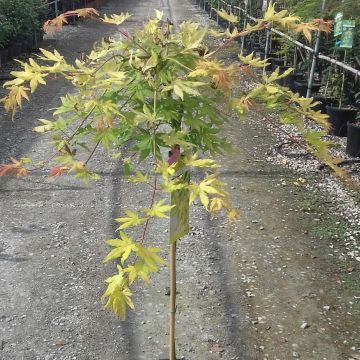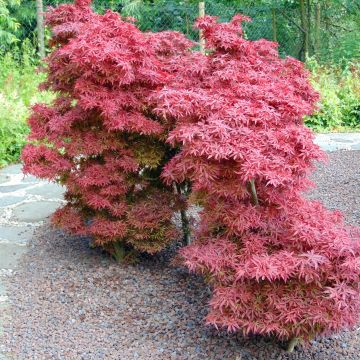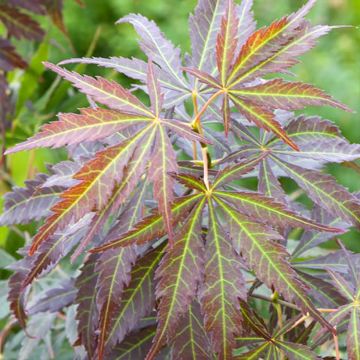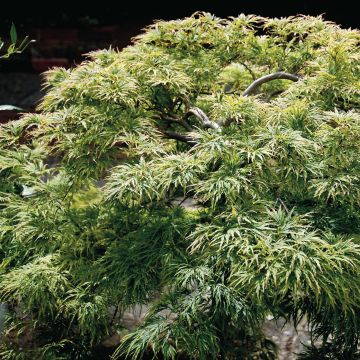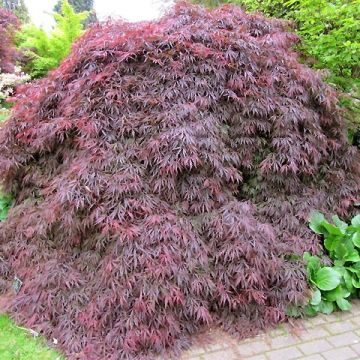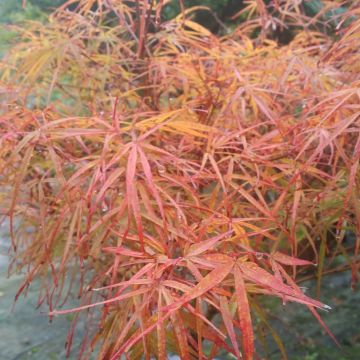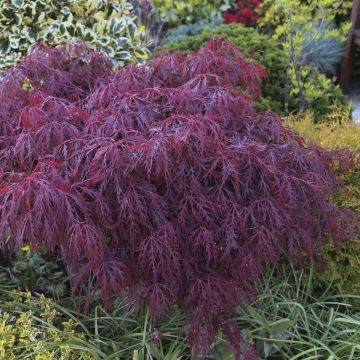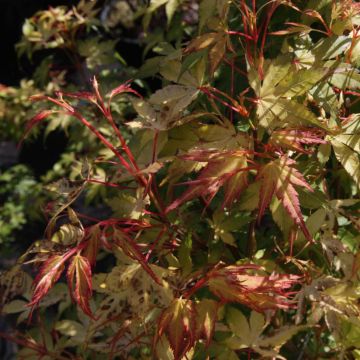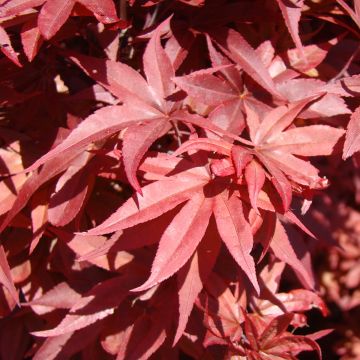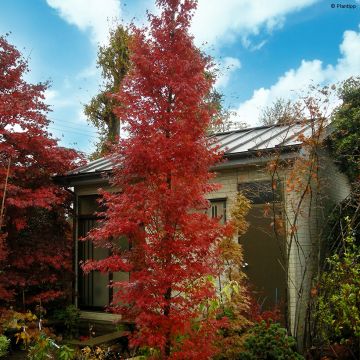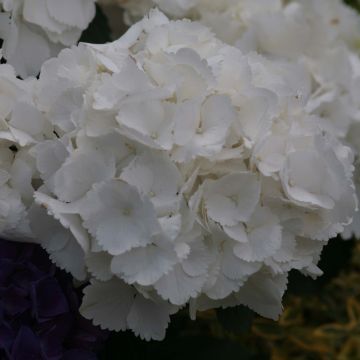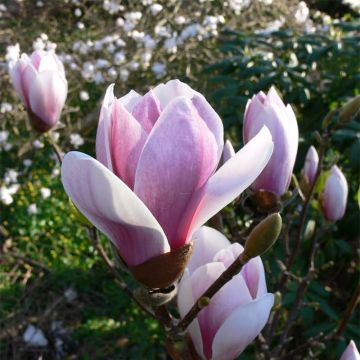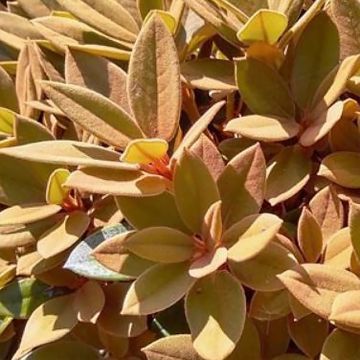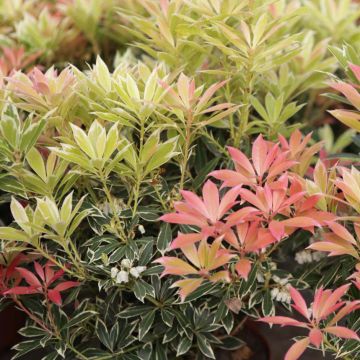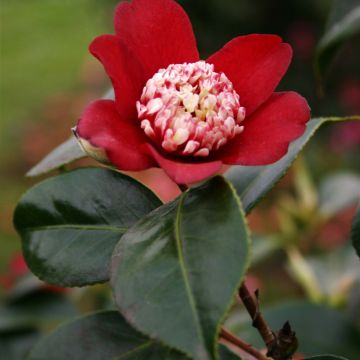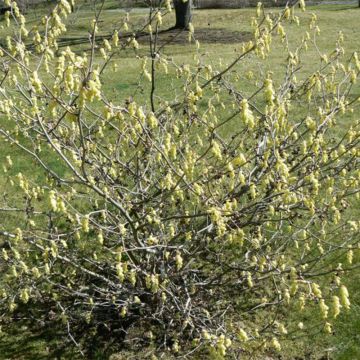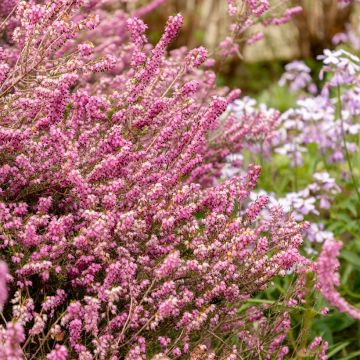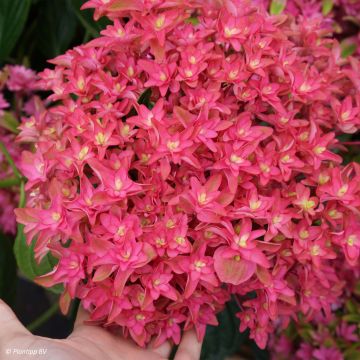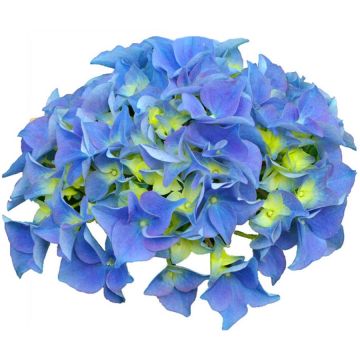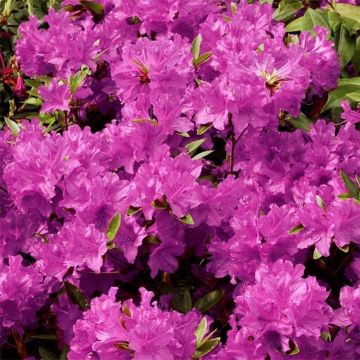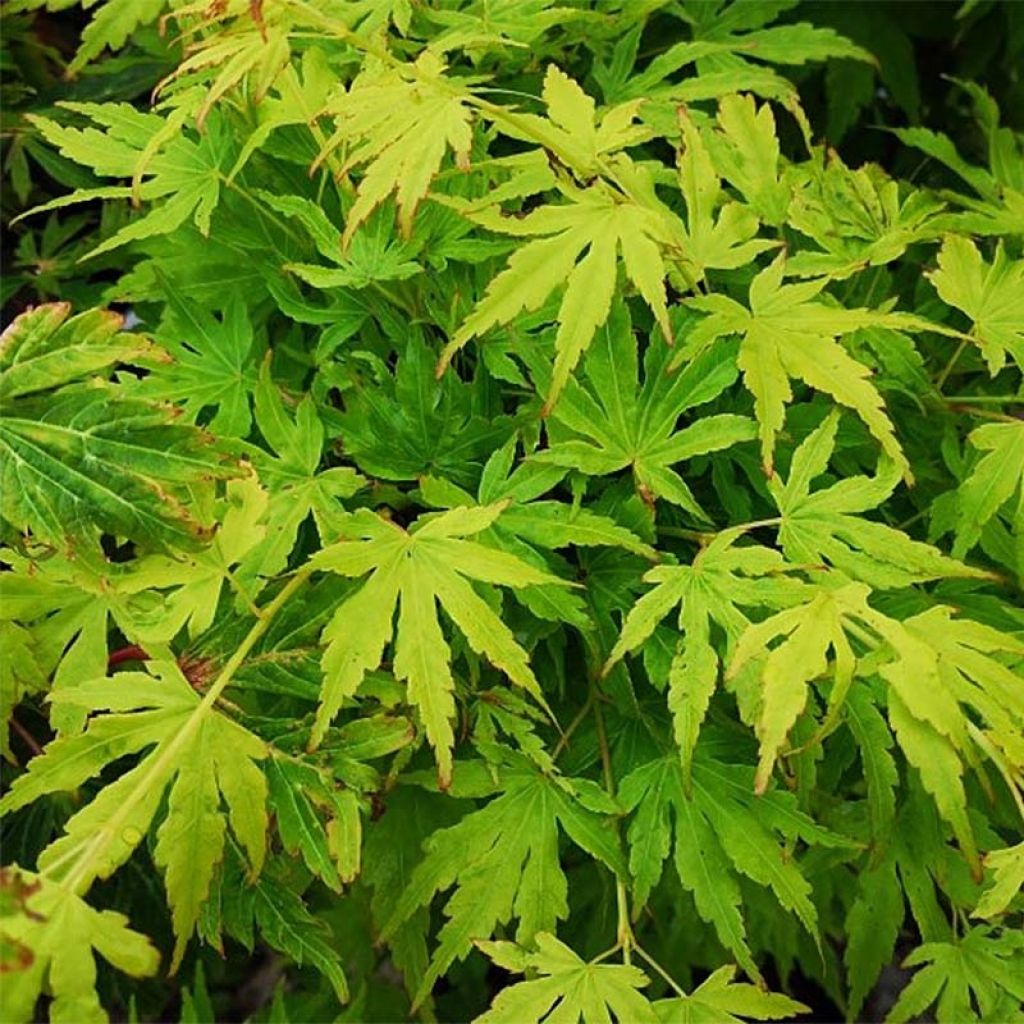

Acer palmatum Going Green - Japanese Maple
Acer palmatum Going Green - Japanese Maple
Acer palmatum Going Green ®
Japanese Maple, Palmate Maple
This item cannot be shipped to the selected country
Delivery charge from €5.90
Delivery to Corse prohibited
More information
Schedule delivery date,
and select date in basket
This plant carries a 24 months recovery warranty
More information
We guarantee the quality of our plants for a full growing cycle, and will replace at our expense any plant that fails to recover under normal climatic and planting conditions.
From €5.90 for pickup delivery and €6.90 for home delivery
Express home delivery from €8.90.
Delivery to Corse prohibited: UE law prohibits the import of this plant from mainland France to Corse as part of the fight against Xylella fastidiosa. Please accept our sincere apologies.
More information
Does this plant fit my garden?
Set up your Plantfit profile →
Description
Acer palmatum 'Going Green' is a Japanese maple that stands out with its strong branches that turn a dazzling light green in winter, at a time when the rest of the garden fades away. It is a deciduous tree with an upright and dense habit bearing beautiful deeply lobed and dentate foliage. Opening with light green leaves in spring and turning dark green in summer before turning yellow-orange in autumn, its more discreet colour easily combines with the more flamboyant colours of other varieties of Japanese maples. Being small in size, it thrives in small spaces, in sun or partial shade in cool, rich, light, and slightly acidic soil.
Native to eastern China, Korea and Japan, Acer palmatum is the origin of a multitude of horticultural varieties that compete in beauty. The Japanese maple belongs, like all maples, to the Sapindaceae (Aceraceae) family. It is relatively hardy but fears dry and cold winds, scorching exposures, and dry and chalky soils.
The cultivar 'Going Green' is particularly ornamental due to the bright light green colour of its branches in winter. It is a compact tree with strong main branches, densely erect, giving it a proud look. It will reach on average 2 m (6.6 ft) in height with a 1 m (3.3 ft) spread, depending on the growing conditions. In spring, this small tree develops young shoots and leaves of a very light green colour. They unfold into palmate leaves, divided into 5 to 7 well-separated dentate lobes. In summer, the lamina darkens to a dark green colour. Just before falling, the leaves take on a magnificent yellow-orange hue. The discreet flowering takes place in May-June. The flowers, grouped in small bouquets, sometimes produce fruits with curved wings, called samaras, 3 cm (1.2 in) long.
Acer palmatum 'Going Green', with its unique wood and natural elegance, stands out from afar, in the garden or when planted in a container on a terrace. Extremely decorative from spring to autumn, it deserves a special place. The Japanese maple is not strictly speaking an ericaceous plant, but it prefers soils rich in humus that remain moist. Chinese azaleas, andromedas, hydrangeas, wild camellias, ferns, and heathers will be its most beautiful companions. It can form a magnificent bonsai to be grown in a flat tray. Mix several varieties of Japanese maples to vary the colours and structures of the foliage; the effect is always stunning at the end of the season. Its green wood and foliage would be perfectly highlighted against a background of dark foliage. Consider pairing it with Styrax japonica 'Evening Light', Hydrangea aspera 'Hot Chocolate', and Loropetalums.
Report an error about the product description
Acer palmatum Going Green - Japanese Maple in pictures
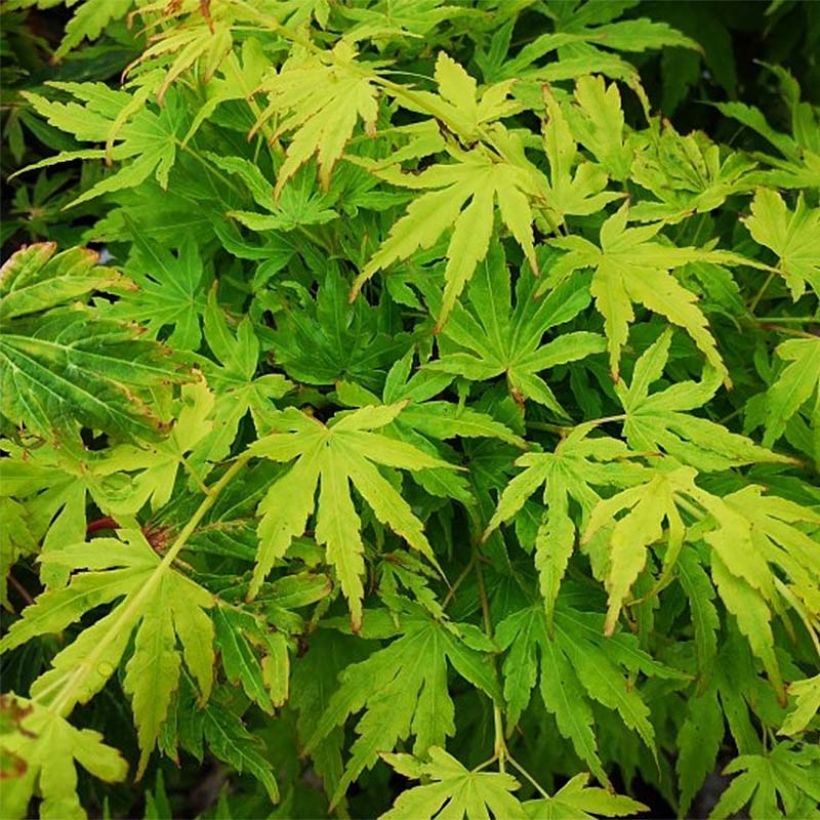

Plant habit
Flowering
Foliage
Botanical data
Acer
palmatum
Going Green ®
Aceraceae
Japanese Maple, Palmate Maple
Cultivar or hybrid
Other Japanese Maples
Planting and care
Plant in spring or autumn in preferably light, humus-rich, neutral to acidic, deep, loose and well-drained soil, in a sunny, semi-shaded or even shady position, sheltered from cold and dry winds. If necessary, keep the soil moist in summer by adding mulch, especially when the plant is exposed to the sun. However, it should not be waterlogged in winter. Apply a significant amount of organic matter every 3 years to ensure a good humus content in the soil. Mulch, water and shower the foliage on hot evenings. Winter pruning is limited to balancing the branches. Treat preventively against scale insects and Verticillium, a fungal disease that occurs in heavy and overly moist soil.
Planting period
Intended location
Care
-
, onOrder confirmed
Reply from on Promesse de fleurs
Shrubs by soil type
Haven't found what you were looking for?
Hardiness is the lowest winter temperature a plant can endure without suffering serious damage or even dying. However, hardiness is affected by location (a sheltered area, such as a patio), protection (winter cover) and soil type (hardiness is improved by well-drained soil).

Photo Sharing Terms & Conditions
In order to encourage gardeners to interact and share their experiences, Promesse de fleurs offers various media enabling content to be uploaded onto its Site - in particular via the ‘Photo sharing’ module.
The User agrees to refrain from:
- Posting any content that is illegal, prejudicial, insulting, racist, inciteful to hatred, revisionist, contrary to public decency, that infringes on privacy or on the privacy rights of third parties, in particular the publicity rights of persons and goods, intellectual property rights, or the right to privacy.
- Submitting content on behalf of a third party;
- Impersonate the identity of a third party and/or publish any personal information about a third party;
In general, the User undertakes to refrain from any unethical behaviour.
All Content (in particular text, comments, files, images, photos, videos, creative works, etc.), which may be subject to property or intellectual property rights, image or other private rights, shall remain the property of the User, subject to the limited rights granted by the terms of the licence granted by Promesse de fleurs as stated below. Users are at liberty to publish or not to publish such Content on the Site, notably via the ‘Photo Sharing’ facility, and accept that this Content shall be made public and freely accessible, notably on the Internet.
Users further acknowledge, undertake to have ,and guarantee that they hold all necessary rights and permissions to publish such material on the Site, in particular with regard to the legislation in force pertaining to any privacy, property, intellectual property, image, or contractual rights, or rights of any other nature. By publishing such Content on the Site, Users acknowledge accepting full liability as publishers of the Content within the meaning of the law, and grant Promesse de fleurs, free of charge, an inclusive, worldwide licence for the said Content for the entire duration of its publication, including all reproduction, representation, up/downloading, displaying, performing, transmission, and storage rights.
Users also grant permission for their name to be linked to the Content and accept that this link may not always be made available.
By engaging in posting material, Users consent to their Content becoming automatically accessible on the Internet, in particular on other sites and/or blogs and/or web pages of the Promesse de fleurs site, including in particular social pages and the Promesse de fleurs catalogue.
Users may secure the removal of entrusted content free of charge by issuing a simple request via our contact form.
The flowering period indicated on our website applies to countries and regions located in USDA zone 8 (France, the United Kingdom, Ireland, the Netherlands, etc.)
It will vary according to where you live:
- In zones 9 to 10 (Italy, Spain, Greece, etc.), flowering will occur about 2 to 4 weeks earlier.
- In zones 6 to 7 (Germany, Poland, Slovenia, and lower mountainous regions), flowering will be delayed by 2 to 3 weeks.
- In zone 5 (Central Europe, Scandinavia), blooming will be delayed by 3 to 5 weeks.
In temperate climates, pruning of spring-flowering shrubs (forsythia, spireas, etc.) should be done just after flowering.
Pruning of summer-flowering shrubs (Indian Lilac, Perovskia, etc.) can be done in winter or spring.
In cold regions as well as with frost-sensitive plants, avoid pruning too early when severe frosts may still occur.
The planting period indicated on our website applies to countries and regions located in USDA zone 8 (France, United Kingdom, Ireland, Netherlands).
It will vary according to where you live:
- In Mediterranean zones (Marseille, Madrid, Milan, etc.), autumn and winter are the best planting periods.
- In continental zones (Strasbourg, Munich, Vienna, etc.), delay planting by 2 to 3 weeks in spring and bring it forward by 2 to 4 weeks in autumn.
- In mountainous regions (the Alps, Pyrenees, Carpathians, etc.), it is best to plant in late spring (May-June) or late summer (August-September).
The harvesting period indicated on our website applies to countries and regions in USDA zone 8 (France, England, Ireland, the Netherlands).
In colder areas (Scandinavia, Poland, Austria...) fruit and vegetable harvests are likely to be delayed by 3-4 weeks.
In warmer areas (Italy, Spain, Greece, etc.), harvesting will probably take place earlier, depending on weather conditions.
The sowing periods indicated on our website apply to countries and regions within USDA Zone 8 (France, UK, Ireland, Netherlands).
In colder areas (Scandinavia, Poland, Austria...), delay any outdoor sowing by 3-4 weeks, or sow under glass.
In warmer climes (Italy, Spain, Greece, etc.), bring outdoor sowing forward by a few weeks.

































